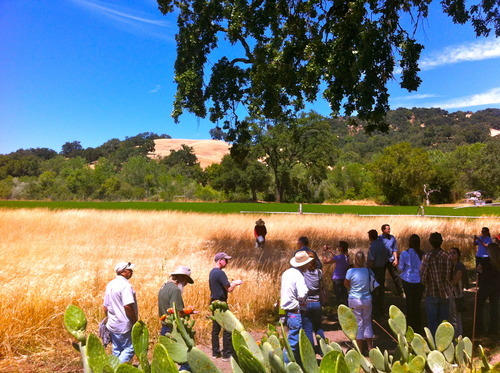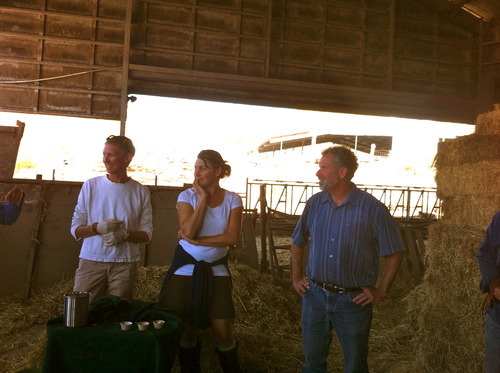
Your 747 is going down. There are no parachutes. Do you A) run into the cockpit, push the unconscious pilot to the side, and try to save the day, or B) accumulate as many seat cushions as possible and prepare for impact?
In the climate change world, Option A is reducing greenhouse gases to prevent climate change. Option B is accepting that change is coming and adapting to it. Thankfully, in real life the choices are not mutually exclusive, unlike the 747 scenario. I recently visited two farms that demonstrate the point.
Straus Family Farm focuses mainly on Option A. Overlooking Tomales Bay, this organic dairy has one of the first small-scale methane digesters. This device turns cow poop into power while eliminating planet-warming methane. This is a big deal because food systems account for about a third of planetary warming.

Meanwhile, Front Porch Farm is a farm focused mainly on Option B. A diverse, biodynamic bounty of wheat, exotic Italian livestock, rye, fruit trees, mulberry bushes and other products helps buffer Healdsburg-based Front Porch from the worst of climate change. What used to be a monoculture of wine grapes is now a variety of smaller plots that increases the farm’s resilience. Heavy rains, extended droughts, and other extreme weather that might decimate a monoculture crop are of less of concern with such a diverse system.
In farm settings, many of the actions that reduce emissions (like installing a methane digester) also help buffer from the potential effects of climate change (by providing an income stream that offsets spikes in feed prices, for example). Conversely, rotating crops and incorporating organic material into the soil can boost a farm’s resilience while also pulling carbon from the atmosphere. As these practices are demonstrated successfully, more farmers will adopt them.